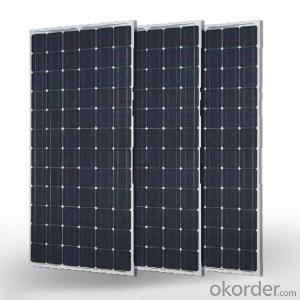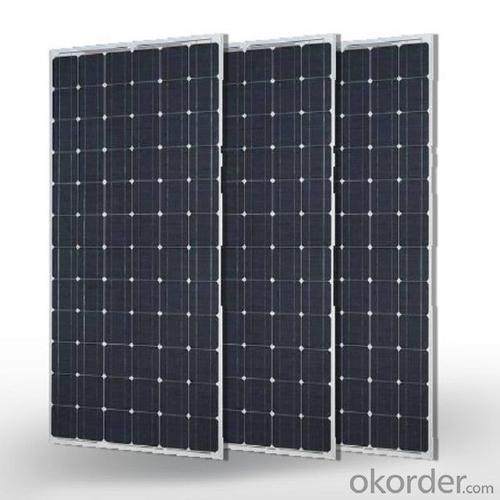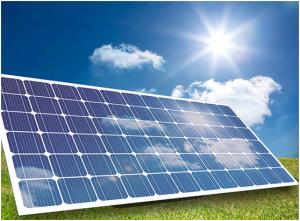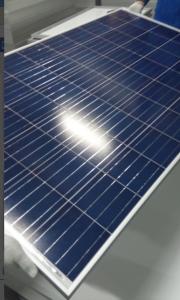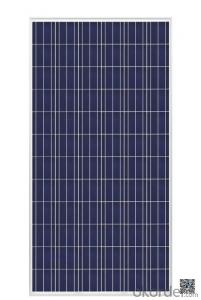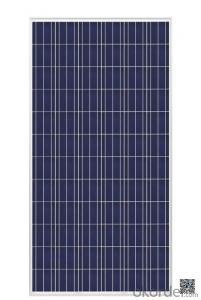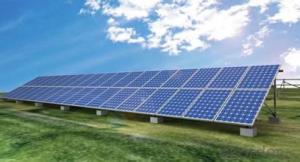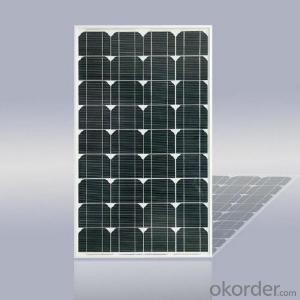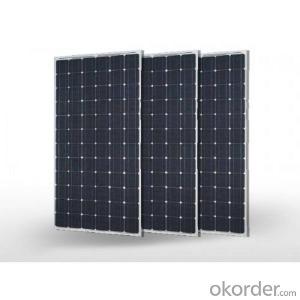Baker Solar Panels - 260W Solar Panel Power in China
- Loading Port:
- Shanghai
- Payment Terms:
- TT OR LC
- Min Order Qty:
- 2600 watt
- Supply Capability:
- 26000 watt/month
OKorder Service Pledge
OKorder Financial Service
You Might Also Like
Specification
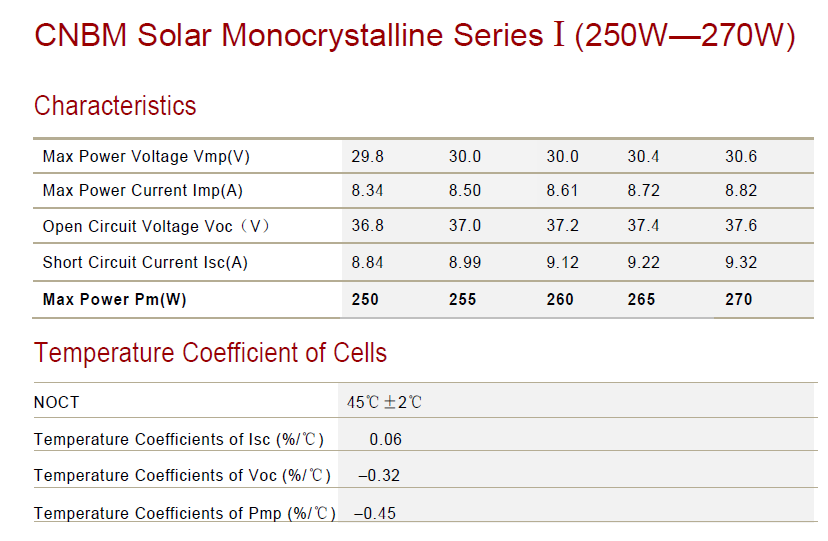
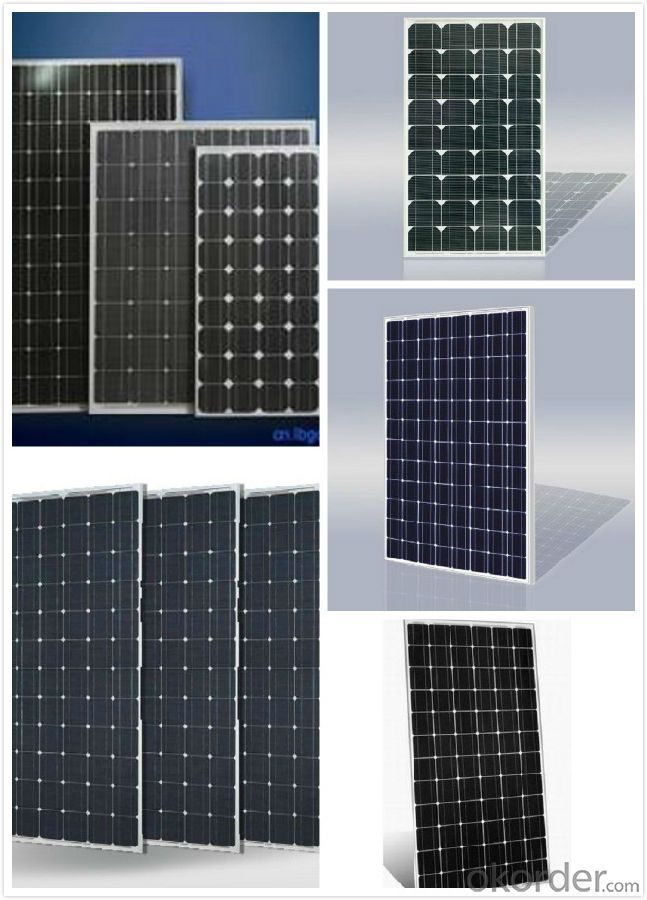
Rated maximum power (Pmax) 260W
Open circuit voltage (vOC) 37.30
Short circuit current (Isc) 8.78
Maximum power voltage (Vmp) 30.10
Maximum power current (Imp) 8.31
Cell efficiency (%) 17.50%
Max system voltage (VDC) 1000V DC
Temperature coefficient of Vm -0.241%/K
Temperature coefficient of Im +0.033%/k
Temperature coefficient of power -0.37%/K
Maximum Series Fuse Rating 15A
Solar cell and configuratiou 60pcs(6*10)in series,156*156mm monocrystalline
Junction box IP65,1000VDC,TUV certified;6 pcs Schottky By-pass diodes
Cable type & CONNECTOR 4m㎡,TUV certificated,0.9m length;MC4
Encapsulation low iron tempered glass,3.2mm thickness,light transmission above 91%;TPT and fast cure EVA
Farame clear anodized aluminum alloy,50/45mm thickness,silver
Dimension (l*W*H) 1640*990*50mm/45mm
Weight 20KG/19KG
Heavy mechanical load salient features 540Pa (ACCORDING TO ICE61215)
Hail impact test lce ball dianeter 25mm,23m/s
Operating temperature -40℃~+85 ℃
Standard test conditions: STC:AM=1.5,1000W/m2,cells temperature 25℃
Power tolerance:±3% (can be provided 0~±3%)
Solar panel working process
In addition to being the ultimate source of all life on earth, the sun is an infinitely renewable, completely pollution-free source of electricity. Instead of burning fossil fuels dug up from the ground in a big power plant – a very 19th century, industrial age approach, when you think about it – solar panels convert sunlight directly into electricity, with no harmful emissions.
The basic unit of a solar panel is a solar cell, which usually consists of one or two layers of silicon-based semiconductor wafers. When struck by the photons in sunlight, the solar cell generates an electrical charge due to the "photovoltaic effect" – which is a pretty good name, since it produces voltage from photons. The flow of these electrons moves in a steady electrical current from one side of the cell to the other.
Dozens of these PV cells are packaged together into solar modules, which in turn are packaged into solar panels that are mounted on a rooftop and arranged to maximize their hours of exposure to direct sunlight. Because the electricity generated by all those solar cells is direct current (DC), it is then sent to an inverter that transforms the power into the same alternating current (AC) used by the appliances in your home and the local utility electricity distribution grid. Increasingly, these inverters are getting "smart," providing data monitoring for solar installation performance and other grid integration services.
- Q: Why would someone use a solar panel? Does it have to do with the economy right now, global warming, or what?
- I doubt the immediate economy has much to do with it. Solar panels require long-term investment, so in hard times, someone having trouble making ends meet is not going to be buying solar panels, when they could be buying food. It's like if someone has a gas guzzler, if they get laid off, they're not going to spend their savings on a new, fuel efficient car, even if it saves money in the long term. However, it's generally the more wealthy that install solar, and they're not impacted as much by a slow economy. Human nature being what it is, I doubt many people install solar to save the planet. There will be some, but I suspect most are interested in the long-term financial savings. I'm kind of unusual, in that our panels are break-even financially at best. The main reason I put them up was for the fun of learning and doing it.
- Q: I don't know anything about where to buy solar panels. I just want to save on the electric bills.
- Simple answer. Anything you can power with your normal household electric can be powered by solar. So you know what a solar panel is: A solar panel is more then one solar module mounted on a frame to be installed as a single unit into a solar array. Next question is normally what is a solar module: A solar module is a bunch of solar cells mounted together with a clear front and a white backing. Solar is something that you install on your home so you don't have to rent electric power from the public utility. It has a large upfront cost but will pay it's self and you then own something. Like if you rent a home you end up with nothing but if you buy a home you pay a big upfront payment and in the end you own it and can sell it for a profit. Yes you can run your A/C unit from Solar Electric. As said above. Anything you can run from the pubilc utility can be ran from solar. If it is in your home and running from electric right now you can run it from solar.
- Q: Can solar panels be installed on historical or protected buildings?
- Yes, solar panels can be installed on historical or protected buildings. However, there are certain considerations and guidelines that need to be followed to ensure that the installation does not compromise the architectural integrity or cultural significance of the building. Special care is taken to design and install solar panels in a way that minimizes visual impact and preserves the historical value of the structure. Additionally, obtaining necessary permissions and approvals from relevant authorities is crucial before proceeding with the installation.
- Q: Can solar panels be installed on military installations?
- Yes, solar panels can be installed on military installations. In fact, many military installations around the world have already embraced solar energy as a sustainable and cost-effective solution for meeting their power needs. Solar panels help reduce reliance on traditional energy sources, provide a more secure and resilient energy infrastructure, and contribute to the overall goal of creating a greener and more sustainable military.
- Q: What is the biggest solar panel you can buy?How much energy can it produce in kwh?Thanks :)
- Depends upon the technology, but keep in mind that biggest may produce the most output per panel but smaller panels may have a higher efficiency factor and so produce more per sq meter. Solar Integrated Technologies:SI-G 864 - STC 864W Thin Film Roofing Membrane - PTC 779.8 Watts ENN Solar Energy: EST-480 - STC 480W Thin Film Tandem Junction Module - PTC 440.6 Watts SunPower:SPR-445J-WHT-D - STC 445W Monocrystalline Module - PTC 42.7 Watts Topsun: TS-M420JA - STC 420W Polycrystalline Module - PTC 376.3 Watts
- Q: Can solar panels be installed on convention centers or event venues?
- Yes, solar panels can be installed on convention centers or event venues. In fact, many convention centers and event venues have already started adopting solar energy systems to reduce their environmental impact and save on energy costs. The large rooftop spaces available in these venues provide ample opportunity for installing solar panels and generating clean, renewable electricity.
- Q: What i would like to know is if you were using commercially available solar panels, clustered as close together as possible and spread out on one acre, how much electrical energy is produced? if u can 'translate' this into terms of ( hour of average daylight = powering a ____ for X units of time)
- In okorder /
- Q: my pool guy cleaned the filter and replaced the DE, but now my roof solar panels have started leaking. how do i stop the leak? does backwashing help in any way?
- bypass the whole panel if you can ( one individual panel of several ) , or bypass that loop in that panel - car part rubber hose clamps
- Q: Can solar panels be used in apartments or condominiums?
- Yes, solar panels can be used in apartments or condominiums. However, the installation process may vary depending on the specific building structure and ownership arrangements. In some cases, individual units can have their own solar panels installed, while in others, a shared or community solar system may be implemented to provide renewable energy to the entire building.
Send your message to us
Baker Solar Panels - 260W Solar Panel Power in China
- Loading Port:
- Shanghai
- Payment Terms:
- TT OR LC
- Min Order Qty:
- 2600 watt
- Supply Capability:
- 26000 watt/month
OKorder Service Pledge
OKorder Financial Service
Similar products
Hot products
Hot Searches
Related keywords
